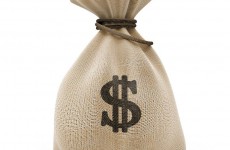Historically, Dallas has been viewed as a Southern city big on spending, fashion, and oil. While Dallas certainly helped cultivate this image with its economic expansion in the 1980s, it has, conversely, cultivated an impression that Dallas is a homogeneous city less concerned than, say, the Northeast when it comes to cultural aspects and intellectual pursuits. But his stereotype is changing rapidly.
Dallas may never fully extricate itself from the “Texas way of life” persona, but with one of the top 10 city populations in the United States, it has become a major economic, social, and political player on the national stage. When you couple this with the outlying suburbs and exurbs that seem to stretch as far north as Oklahoma and as far west as Fort Worth (ask someone at the airport where they are from, and when they answer “Dallas,” press them further about specifics, and inevitably they will say “Plano,” “Flower Mound,” or “Mesquite”), the Dallas metropolitan area becomes one of the most populated areas in the United States. And with an influx of new citizens every year, the variety of racial, cultural, and socioeconomic groups is continuously changing. From 2011 to 2012 the Dallas-Fort Worth-Arlington corridor (larger than the Dallas Metropolitan area, but comparable with New York-Newark-Jersey City; Los Angeles-Long Beach-Anaheim) grew more than any other metropolitan area in the top 25, outside of Houston-The Woodlands-Sugar Land, according to the North Texas Commission.
But when one looks at Dallas, upon closer inspection, they should also see a vibrant educational backdrop that has actually flourished, even with its struggles of shaking the old stereotypes.
Starting at the top, Dallas is home to Southern Methodist University, a private institution that itself has fallen prey to the overarching assumptions and stereotypes of Dallas. According to the National Center for Education Statistics (NCES), more than half of the undergraduates that attend SMU are from out-of-state, and nearly 80% receive some sort of financial aid. While the sticker price for an education at SMU is certainly high, the academics have improved over the last decade and the overall offering of academic resources has been bolstered by the introduction of the George W. Bush Presidential Library. Currently, only 34% of the student population is self-identified as an ethnic minority, but this number has increases nearly ten percent since 2008. The transformation of SMU from a fallen “golden age of football” to a high-achieving and welcoming academic environment is a work in progress, and it certainly seems to have entered a new phase of education focused on a new image of loftier academics within a wider-ranging community.
When one looks at the schools beneath the collegiate ranks, it becomes apparent that the greater Dallas area offers a wide variety of secondary-education options, ranging from Magnet to Charter, Public to Private. Dallas boasts two public schools that have each been ranked #1 among all high schools in the nation over the last three years and continue to be in the top 5 – The School for the Talented and Gifted (U.S. News and World Report) and the School of Science and Engineering Magnet (Newsweek and the Washington Post) – as well as the Irma Lerma Rangel Young Women’s Leadership School which was selected as one of the top 15 schools of 2013 in the U.S. News, and top 5 in the Washington Post.
While the Dallas Independent School District (DISD) has certainly faced socioeconomic challenges over the last decade with its large network of 230 schools serving more than 157 thousand students, offering three schools that are continuously ranked in the top 15 is quite an accomplishment. Other highly regarded public schools across the Dallas area include: Booker T. Washington (a performing and visual arts school); Woodrow Wilson (one of the few schools that offers the International Bachelorette program); Highland Park High School (17th ranked by U.S. News amongst public schools in Texas), and a plethora of growing charter and magnet schools.
Outside of Dallas public education is the highly competitive private school arena. Since the early 1900s, Dallas has been home to both The Hockaday School (all girls) and St. Mark’s School of Texas (all boys). These schools were the only two in the Dallas area with more than 12 National Merit Semi-Finalists over the last calendar school year. And with endowments toping $100 million each, Hockaday and St. Mark’s are two of the wealthier private schools across the nation. Each boasts low student-to-faculty ratios, large campuses, and students claiming a diversified ethnic makeup hovering around 40%.
Other well-regarded private schools in the Dallas area include: the Greenhill School, Cistercian Abbey and Preparatory School, Trinity Christian Academy, Jesuit College Preparatory of Dallas, and the Ursuline Academy of Dallas, all of which produced seven or more National Merit Semi-Finalist in the past year. Dallas is also home to the Dallas International School, the only school offering both an International Bachelorette program and the French Bachelorette program. While all of these schools have certainly displayed high achievement academically, the average yearly tuition of all private schools researched by General Academic sits just under $19,000 a year – a high sum even for the best educations.
However, when cost is subtracted, these schools offer students a wide variety benefits: alumni networks, endowment dollars per student; athletic programs, International Bachelorette and Advanced Placement classes offered; school history or percentage of students accepted to Ivy League schools. Dallas also offers a number of highly regarded “Special Needs” schools, six schools that provide single-sex education, and five Catholic schools.
Dallas certainly has a certain persona amongst major cities in the U.S., either real or imagined, and it will continue to be a center for commerce as the city and State of Texas adapt to socioeconomic and political shifts, but a key takeaway, especially in Dallas, is that the educational market is robust and strong, and if the last decade is any indicator, it is only getting stronger.















2 Comments